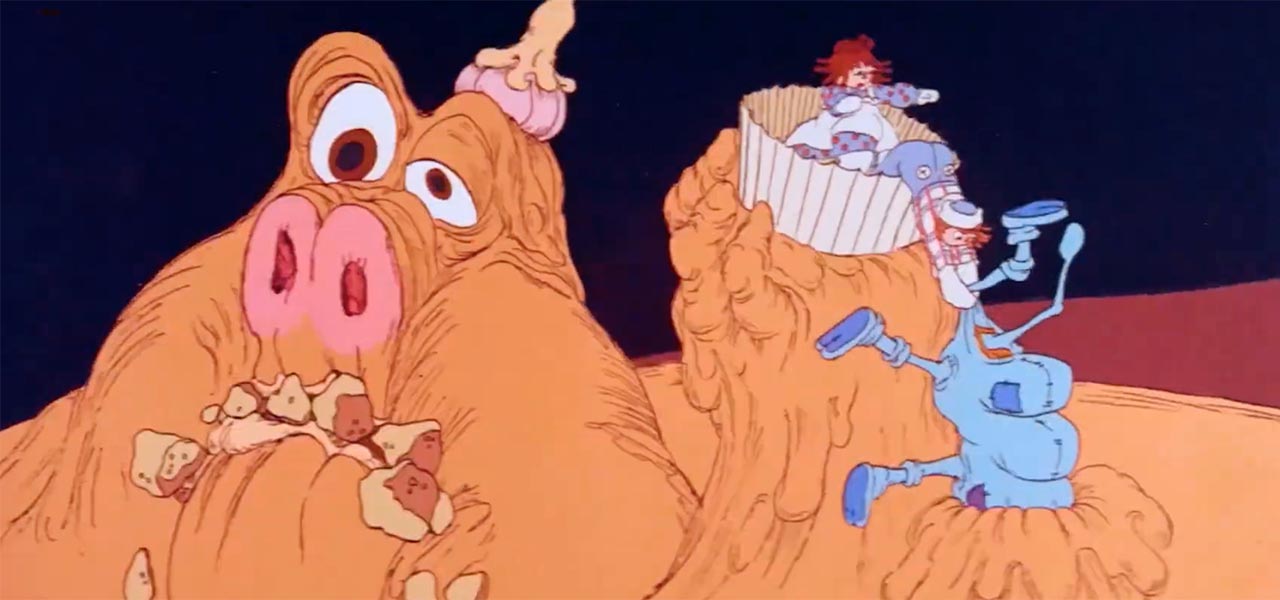

Animator Spotlight: Emery Hawkins
Few animators can boast a body of work as impressive as Emery Hawkins (1912-1989), one of the true greats of the Golden Age of Animation and a restless artist who could never seem to stay put at one particular studio. In the 1930s and ’40s, he hopped around from MGM to Disney to Screen Gems to Walter Lantz to Warner Bros., and he worked with various companies creating commercials and industrial films in the 1950s.
If the name Emery Hawkins sounds like a Snuffy Smith character, that adds up, because Hawkins was a true-blue country boy; he was the son of a cowboy and grew up in a mining town on the side of a mountain in Jerome, Arizona. He learned to animate by creating flip books out of his notebooks, and began his career as a cel inker at the Charles Mintz studio.
Hawkins was an experimenter who never stuck to a standard way of animating. As Hawkins himself said of his approach, “I do everything. Upside down, in and out, this way, every way, I animated backwards, forwards, and then straight ahead, and then planning staging it all in stills, everything is different, every scene has a different kind of thing it needs. I envy animators that only animate one way. Cause it kinda settles the nerves, it settles problems easier. I never seem to be able to.” Here’s a classic scene Hawkins animated in the Bugs Bunny cartoon What’s Up, Doc? (1950), directed by Robert McKimson.
— Cartoon Study (@CartoonStudy) August 27, 2024
Even from the beginning, what stands out about Emery Hawkins’ animation is its irrepressible energy, an energy that Hawkins apparently possessed in real life. Fellow animator Roger Armstrong recalled, “Emery Hawkins used to do weird things; he was a wild man. He’d get up on top of the cubicles, and he’d wait for people to come in from lunch, then he’d leap down on them, screaming with maniacal laughter. A little bit nutty, really, but a funny man.”
You can see an early example of that wildness in the MGM short The Honduras Hurricane (1938), where a boxing match between two roosters becomes a furious explosion of speed lines and multiple heads. That brief moment where the rooster’s body turns into a pile of broken parts is just brilliant.
— Cartoon Study (@CartoonStudy) August 27, 2024
An easy way to identify a Hawkins scene is the distinctive blank stares. He would give his characters long oval eyes with little dilated pupils; they were usually cross-eyed, either inwardly or outwardly, and always had a slightly crazed look. You can see the “Emery Hawkins stare” on full display in this scene from the Walter Lantz short The Poet and Peasant (1945).
— Cartoon Study (@CartoonStudy) August 27, 2024
Hawkins’ talent for crazy expressions was well-used in the Woody Woodpecker cartoons. Hawkins collaborated with character designer Art Heinemann to redesign Woody from the stumpy, buck-toothed bird of his first few appearances to the more standard design of Woody we know today. There’s some great acting with some remarkably specific hand gestures in this Woody scene from James “Shamus” Culhane’s The Reckless Driver (1946).
— Cartoon Study (@CartoonStudy) August 27, 2024
Hawkins worked two separate stints at Disney, although he found following the studio’s restrictive guidelines oppressive. He surmised, “I go berserk as far as the formula. I just can’t resist the temptation to take the formula and change it. Cause everything I’ve ever done I’ve always changed changes. Change, change, change, change, change. Try to push a thing, stretch it, go further. And a lot of times this never went over because they had fixed characters with fixed walks and so many beats. And I was always fighting that.” You can see Hawkins pushing those boundaries in Donald’s Dilemma (1947): Daisy Duck’s mental breakdown has some real animalistic rage behind it.
— Cartoon Study (@CartoonStudy) August 27, 2024
While Hawkins’ style stands out in his films at Disney, Lantz and Screen Gems, Hawkins was at his best working on the Looney Tunes cartoons. In typical Hawkins fashion, he hopped around from director to director in his brief time at the studio, working under Chuck Jones, Friz Freleng, Robert McKimson, and Arthur Davis. Pay attention to the beautiful flowing motion in this scene from Davis’ What Makes Daffy Duck (1948). Every little nuance perfectly matches the energy of Mel Blanc’s vocal performance.
— Cartoon Study (@CartoonStudy) August 27, 2024
One great thing about Hawkins was his ability to work within the styles of numerous studios and directors while still maintaining his idiosyncratic personality. This was even true when he worked on modernist UPA-inspired commercials and art films in the 1950s. Check out this Speedway 79 ad he animated for John Hubley’s Storyboard Productions in 1954 and you can see the same bouncy squash-and-stretch of his Looney Tunes work applied to these charmingly stylized abstractions. (Arnold Gillespie also assisted on this ad.)
— Cartoon Study (@CartoonStudy) August 27, 2024
One of the most bravura examples of Hawkins’ genius is the eight-minute sequence he animated for the Richard Williams feature Raggedy Ann & Andy: A Musical Adventure (1977), which features a constantly shapeshifting and transmogrifying character called The Greedy. Legendary Disney animator Ward Kimball said that this was one of the few pieces of animation that he couldn’t imagine being able to do himself, and it’s easy to see why. The staggering amount of detail here as everything is constantly shifting and warping is a testament to Hawkins’ technical skill as well as his endless creativity.
— Cartoon Study (@CartoonStudy) August 27, 2024
Do you have a favorite Emery Hawkins scene? Let us know in the comments below.
— Cartoon Study (@CartoonStudy) August 27, 2024

